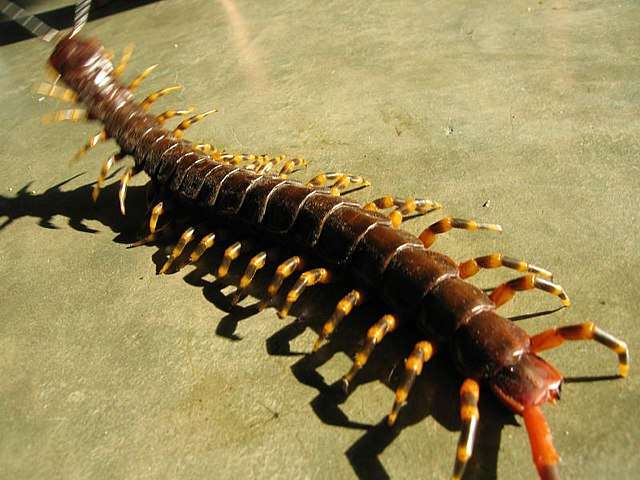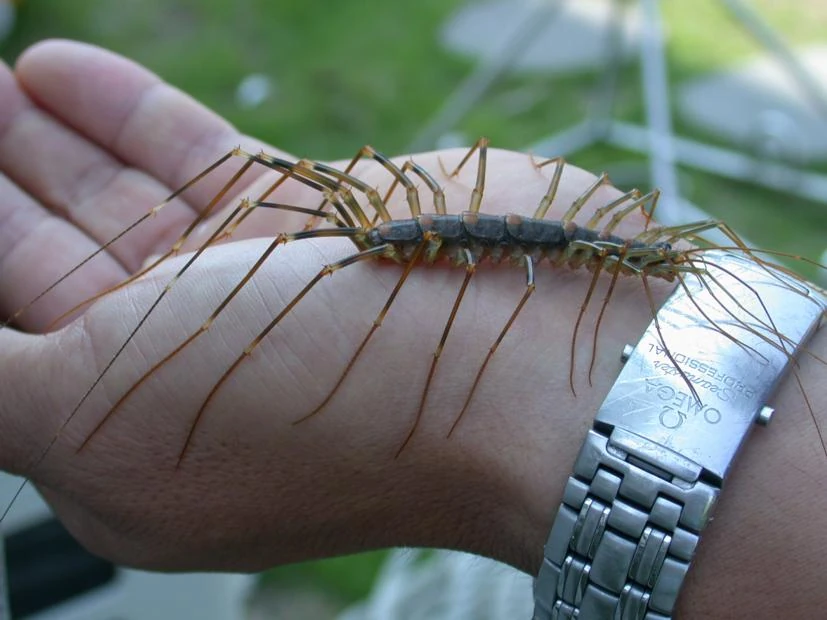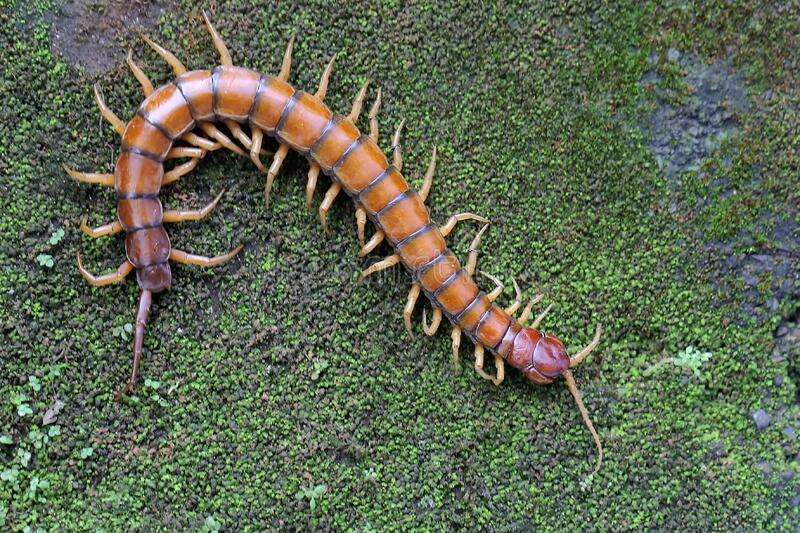
The largest centipede found in Australia is the giant centipede, Ethmostigmus rubripes. Its size tends to vary depending on the region, with some individuals exceeding 20 cm. The head and body length range from 7.5 to over 16 cm (6+14 in). The forms from rainforest ecosystems often have dark green or blue coloring, those from desert regions are frequently pale yellow in color. Body proportion also varies with habitat. Additionally, there are three subspecies of Ethmostigmus rubripes, each with a wide range of characteristics.
Habitat
It can be found in both dry and wet environments, from tropical rainforest to desert, and is typically found in protected areas like under logs, leaf litter, bark, and rocks. It is a lone, nocturnal, terrestrial predator.
Geographic Range
It is widespread in Australia, where it differs the most, as well as in the Solomon Islands, New Guinea, Indonesia, and other regions of Southeast Asia.
Diet
- rubripes eat anything in sight. For the most part, people don’t mind eating insects, snails, worms, or even arachnids. Small vertebrates are easily subdued by larger species, which are more than capable of doing so because of their superior size and the centipede’s potent venom. Additionally, they have been seen scavenging on roadkill.
Identification
- The Giant Centipede comes in a variety of hues, including orange-yellow, dark blue, green, and brown.
- Its antenna and legs are yellow, while its body is banded in black.
- With 25 or 27 body segments and 21 or 23 pairs of legs, the body is long and flattering. The first set of legs are modified claws that curl around the animal’s head and can inject its prey with venom.
- Although the venom is poisonous to both mammals and insects, it does not seem to be potent enough to immediately dispatch large creatures.

Reproduction
The mother watches over the eggs and hatchlings until after their second molt. The eggs are placed in clusters of about thirty, however occasionally there are fewer than ten or more than forty. The development of the eggs often takes more than a month, and the newborns stay with their mother for a few weeks after that.
Venom
The first body segment of the gigantic centipede contains modified legs called forcipules that coil around its head and can inject poison into its victim. Although the venom is poisonous to both mammals and insects, it does not seem to be potent enough to immediately dispatch large creatures. Humans may experience intense pain that lasts for several days but is reasonably manageable with the use of ice packs. Some experience “severe pain,” while others say it is only slightly more painful than a wasp sting.
Keeping as Pet
Requirements
Substrate
The substrate, which should be made of coconut husk, peat moss, and topsoil, should be 4-6 inches deep. Simple coconut husks have also been successfully employed, as well as leaf litter and rotting wood.
Light
You can keep an eye on your pets’ nightly activity by using red or black reptile night lights.
Feeding
Centipedes may survive on a diet of earthworms, roaches, and crickets. Insects captured in the wild could be served to help balance the diet. With the use of tongs, they will even eat canned grasshoppers and snails, but you must use considerable caution. Even for the largest species, mice are not necessary. It could be advantageous to powder meals once a week with a reptile vitamin and mineral supplement. Centipedes get their water from their meal, however they should have a shallow water bowl available.
Heat
The majority thrive between 72 and 85 °F; please post below for specifics on each species. The terrarium can be warmed using ceramic heaters, red or black reptile night lamps, or heat pads. To avoid drying out, keep an eye on the humidity.
Humidity
Centipedes need humidity levels of about 75% since they are susceptible to dehydration. By misting, wetting the substrate, and partially covering the lid with plastic, humidity can be raised. In dry environments, humidity monitors and reptile misters are helpful.
Companions
Centipede companions must be kept alone since they are “pathologically unsociable.”
Daily Maintenance and Care
When centipedes molt, they stay underground, making high humidity levels crucial at that time. Frequently, food or substrate will bring tiny white mites to terrariums. Most scavengers are harmless, and you can entice them into a jar by baiting it with fish flakes. For more details, please view the article linked below.
Table





